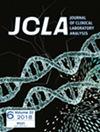The infection caused by Mycobacterium tuberculosis arises from a complex interplay between the host immune system and the bacteria. Early and effective treatment of this disease is of great importance in order to prevent the emergence of drug-resistant strains. This necessitates the availability of fast and reliable diagnostic methods for managing affected cases. One reason why this study is significant is the lack of a comprehensive review in this field that thoroughly examines the importance, pathogenesis, and diagnosis of M. tuberculosis. Therefore, the aim of this review is to provide updated information on M. tuberculosis.
We investigate the virulence factors, pathogenicity, and diagnostic methods of this bacterium, alongside the clinical symptoms and interpretation of different types of tuberculosis, including cerebral, miliary, nerve, and tubercular tuberculosis.
Mycobacterium tuberculosis acts as the causative agent of human tuberculosis and is regarded as one of the most adaptable human pathogens. M. tuberculosis possesses several virulence factors that help the bacterium evade mucous barriers. The rise of multidrug-resistant tuberculosis (MDR-TB) in both developing and industrialized countries emphasizes the need for rapid diagnostic methods.
Non-protein virulence factors play a crucial role in the pathogenicity of Mycobacterium tuberculosis (M. tuberculosis). The bacterial cell membrane contains proteins that modulate the host immune response. For instance, ESAT-6, either alone or in combination with CFP-10, reduces immune activity. While molecular techniques—such as DNA microarray, luciferase reporter assay, polymerase chain reaction (PCR), DNA and RNA probes, next-generation sequencing, and whole-genome sequencing—offer rapid, sensitive, and specific detection of M. tuberculosis, these methods are expensive and require technical expertise.



